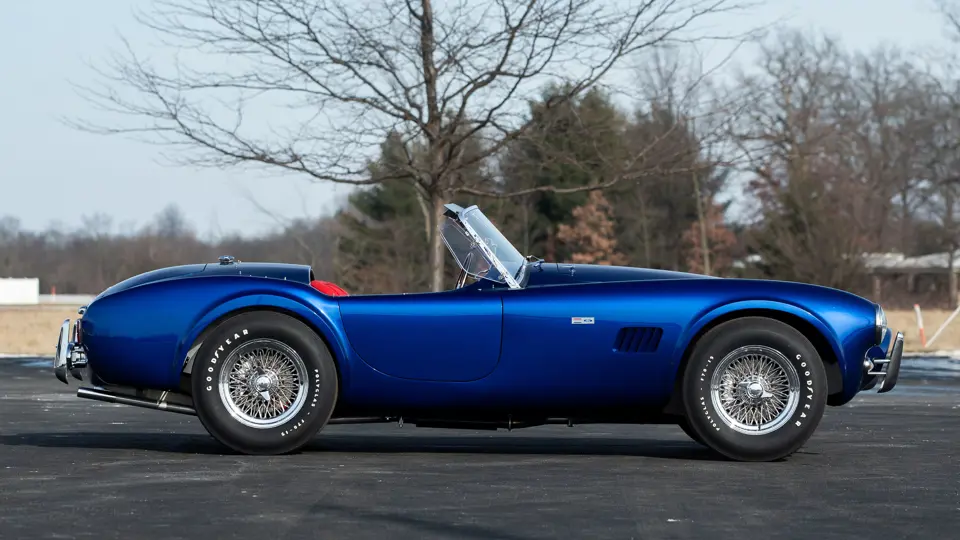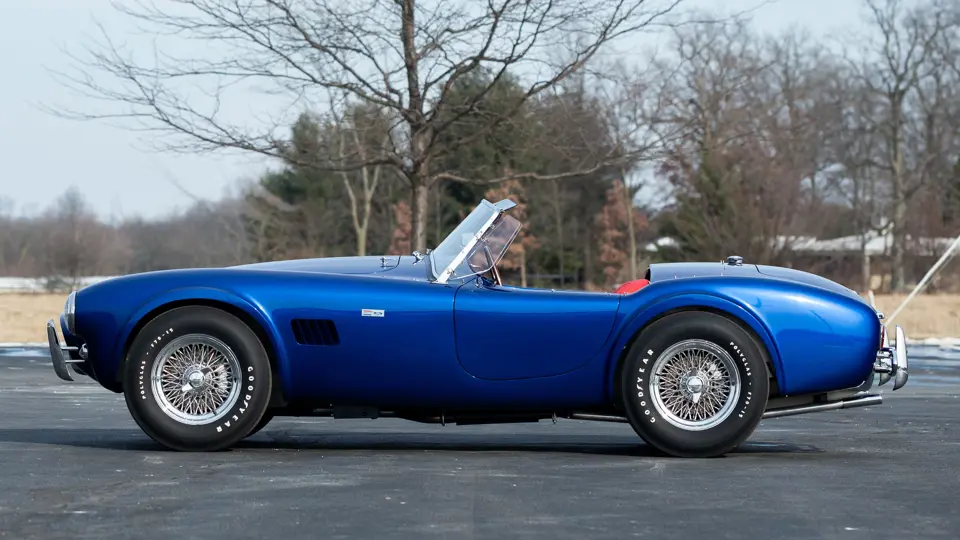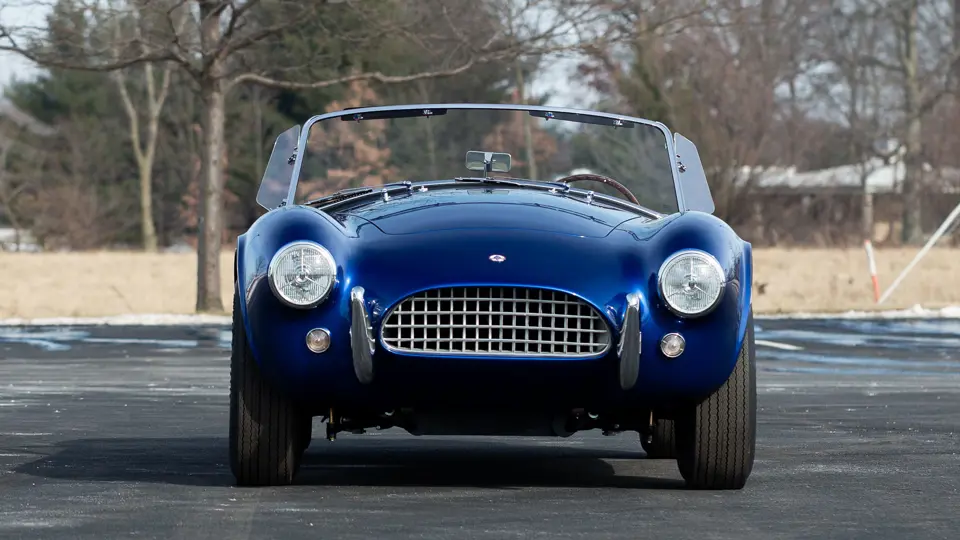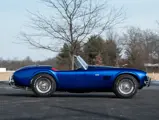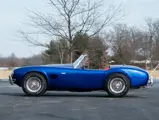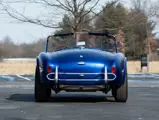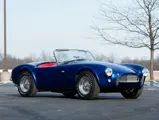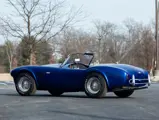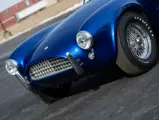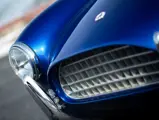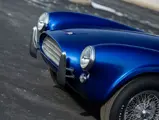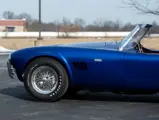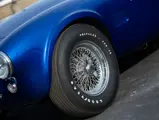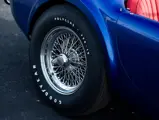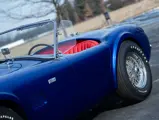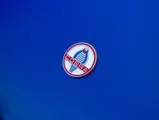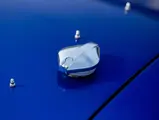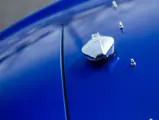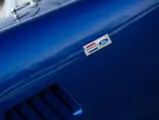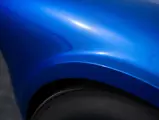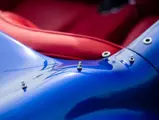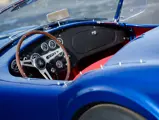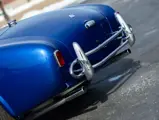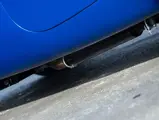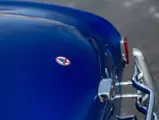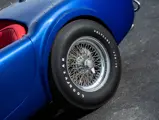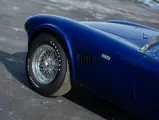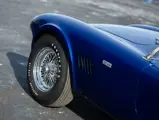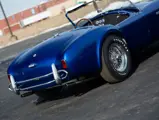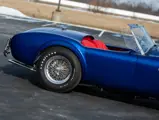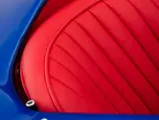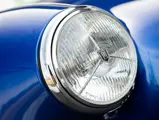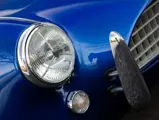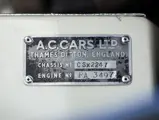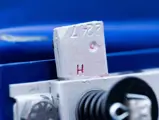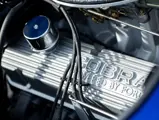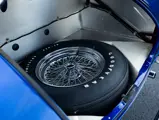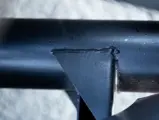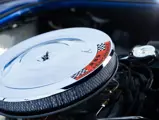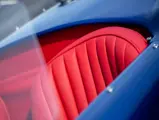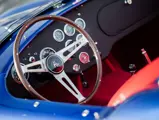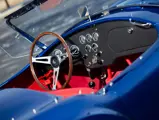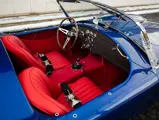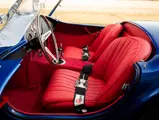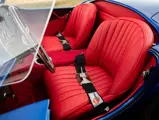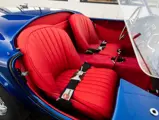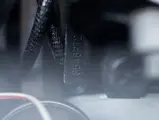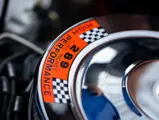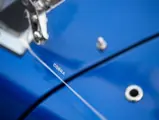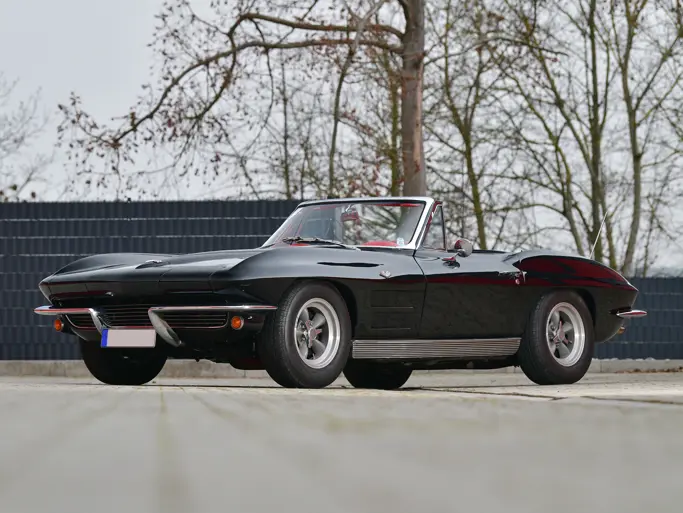
1964 Shelby 289 Cobra
{{lr.item.text}}
$1,132,500 USD | Sold
{{bidding.lot.reserveStatusFormatted}}
- Sold new through Coventry Motors in Walnut Creek, California
- Documented registration paperwork from 1972-2011
- Finished in the beatuful shade of Bright Blue over red, as delivered
- Retains matching-numbers 289 cu. in. V-8 engine
- Documented in the SAAC Registry
- Restoration by Don Dickinson completed spring 2021
The notion of producing a hybrid sports car in the 1960s was, at its core, quite simple. While British manufacturers retained the edge in styling, road holding, and superb braking, American firms held a distinct horsepower advantage. Uniting the two in a “best of both worlds” concept was, of course, nothing new: Post-war Allards, Cunninghams, and Nash-Healeys used the same basic premise. Carroll Shelby, however, considered chassis from Austin-Healey, Jensen, and Bristol before settling on AC, after hearing that the builders of the stylish and sturdy Ace had lost their powerplant supplier when Bristol ceased engine production.
Attractive, lightweight, and proven, the AC Ace could, by Shelby’s thinking, be turned into a successful production racer by replacing its aging six-cylinder engine with a powerful, deep-breathing V-8. In September 1961, Shelby wrote Charles Hurlock, of AC Cars, to propose a hybrid car using the AC sports car body and chassis. “I’m interested,” wrote Hurlock, “if a suitable V-8 could be found.” Shelby moved quickly when Ray Brock, editor of Hot Rod magazine, told him of Ford’s new, lightweight small-block V-8. Soon after, Shelby had an early 221-cubic-inch example installed in a stock AC Ace, and it was found that the V-8 weighed just slightly more than the six-cylinder Bristol.
Sporting a four-speed manual gearbox, the prototype, chassis CSX 2000, weighed in at just 2,100 pounds and was campaigned across the United States. Shelby American could barely meet demand for the brawny little racecar. By 1963 Shelby upped the ante, switching to a rack-and-pinion steering system—and, most notably, adopting the 289-cubic-inch Ford motor with 271 horsepower. The Shelby 289 Cobra was able to accelerate from 0-60 mph in just 5.8 seconds, with a top speed of 130 mph. The superb power-to-weight ratio enabled the newcomer to take 7th place in the 1963 24 Hours of Le Mans, and Dan Gurney went on to be the first US driver to win an FIA race in an American car at the Bridgehampton 500 KM in September of the same year. The following year at Le Mans, the Shelby Cobra won 4th place overall and 1st in the GT class.
CSX 2247
CSX 2247 was billed to Shelby American on 20 November 1963 and shipped to Los Angeles two weeks later aboard the SS Loch Gowan. Upon completion at Shelby American, CSX 2247 was invoiced to Coventry Motors in Walnut Creek, California on 12 February 1964. Finished in the stunning, uncommon, and desirable shade of Bright Blue over red, it featured Class A accessories which included a radio with antenna, a luggage rack, aluminum rocker covers, five chrome wheels, and WSW tires, and it was topped off with five quarts of antifreeze.
In February 1964 the car was purchased by its first owner, Andrew Wortman of Santa Monica, California. Mr. Wortman paid $6,250 for the Cobra, a figure brought down by a $1,000 credit for the 1962 MG Midget he traded in on the purchase. By the 1970s Don Price of California owned the car; at this point modifications had been made to the car for Solo I competition including a full roll bar, side pipes, and fender flares to accommodate wide Ansen slotted wheels. According to the SAAC registry the car sustained slight damage to its right side in a June 1973 Solo I run.
In April of 1974, Don Price parted ways with CSX 2247, with Bob Schiro Motors making the $5,800 purchase. Remarkably, the Cobra would remain in the Schiro family for the next 40 years. After many decades under the same roof, the car exchanged hands again in 2020 and found a new home in Texas with Don Davis. Soon after, Don Dickenson was commissioned to fully restore the vehicle. Photo documentation on file shows the car stripped down to bare metal and rebuilt. At this time, it was confirmed the car’s chassis and engine matched the chassis tag. Today, the Cobra sports its original color combination of Bright Blue over red and shows in superb quality. After the work completed early in the spring of 2021, Mr. Davis sold the vehicle to its current owner later that same year in June.
Documenting the vehicle’s history are copies of registration paperwork dating from 1972 through 2011. In addition, copies of invoices from the 1970s, bills of sale, and correspondence from Don Price to Bob Schiro Motors are available within the car’s file, along with the aforementioned restoration photos.
CSX 2247 represents a superb example of the famed Shelby Cobra. Well-documented and finished in its eye-catching correct colors, the roadster benefits from continuous recorded ownership history dating back to the very beginning of its life. Thanks to a recently completed restoration, the Cobra has been returned to its delivery specification and appears in stunning condition, ready to take the world by storm—just as the acclaimed model first did when it roared onto the sports car scene six decades ago.

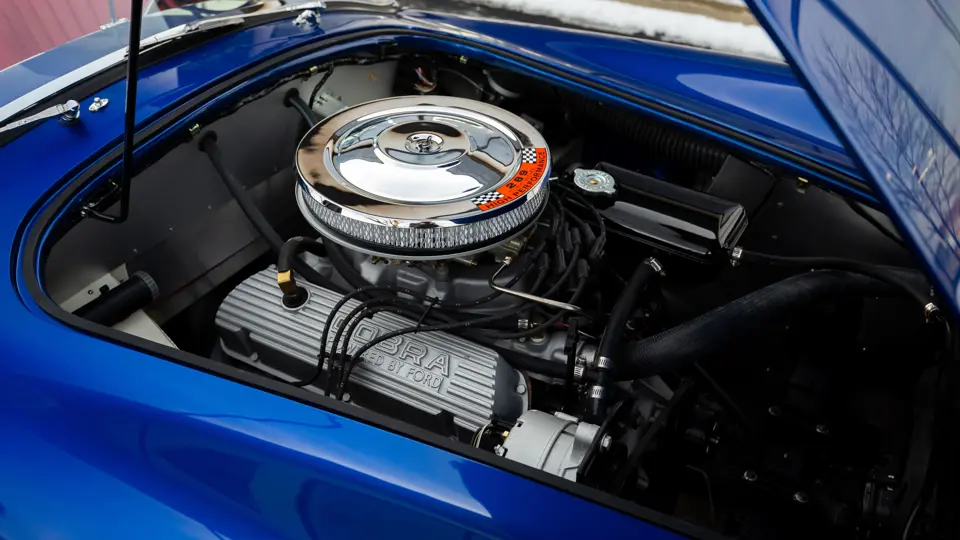
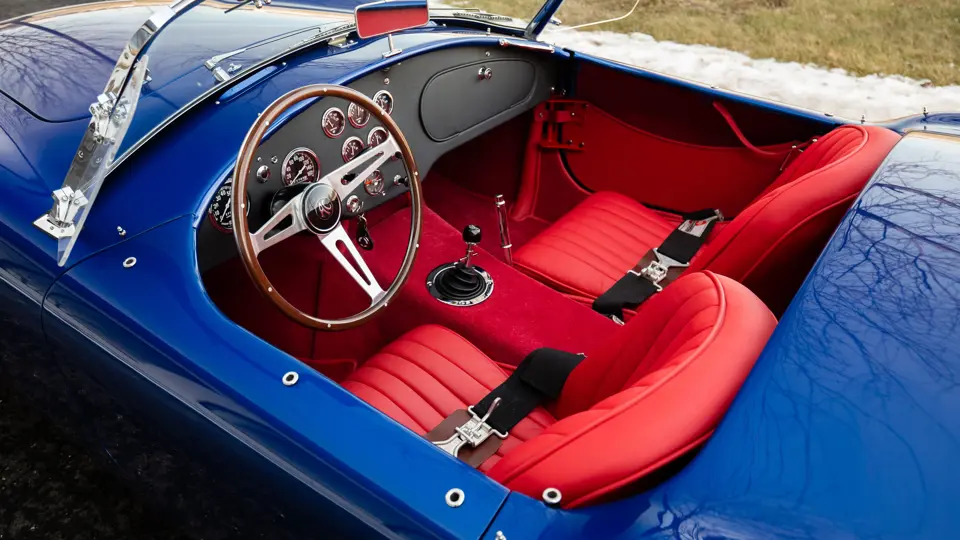

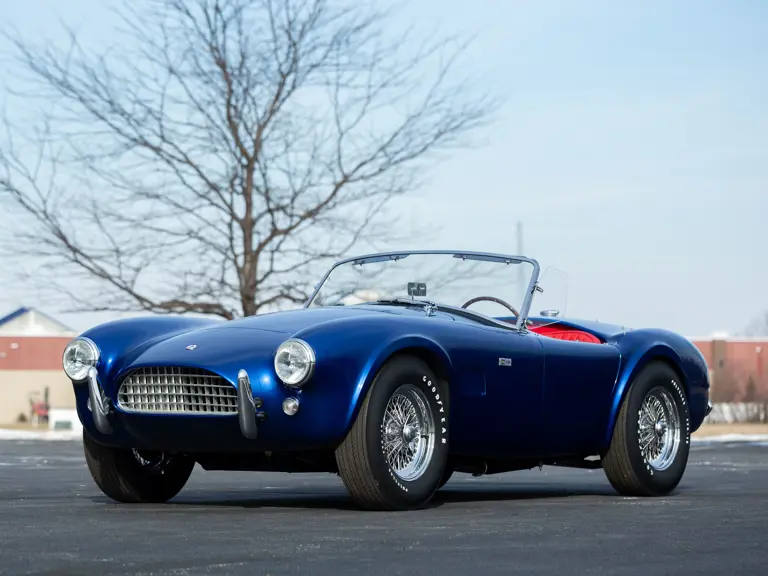
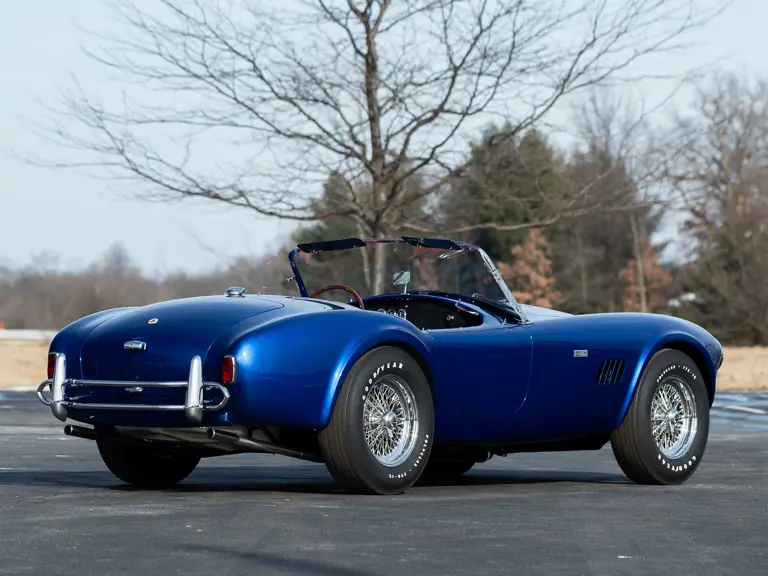
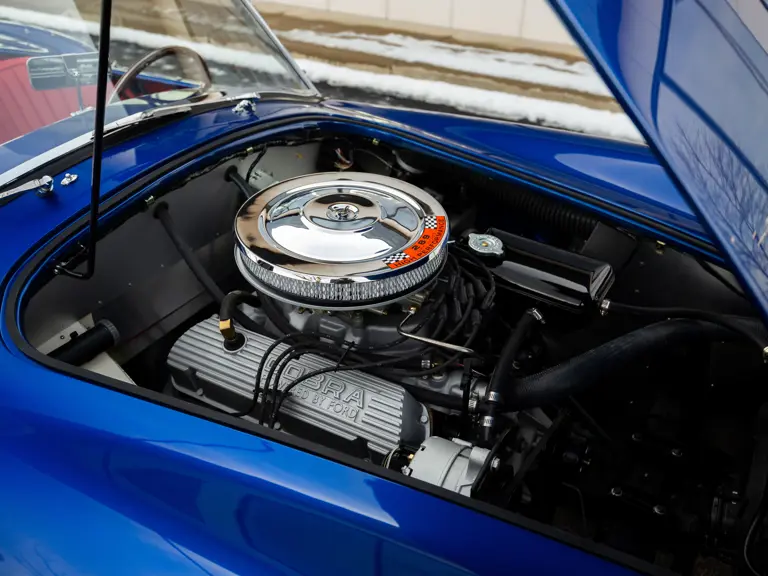
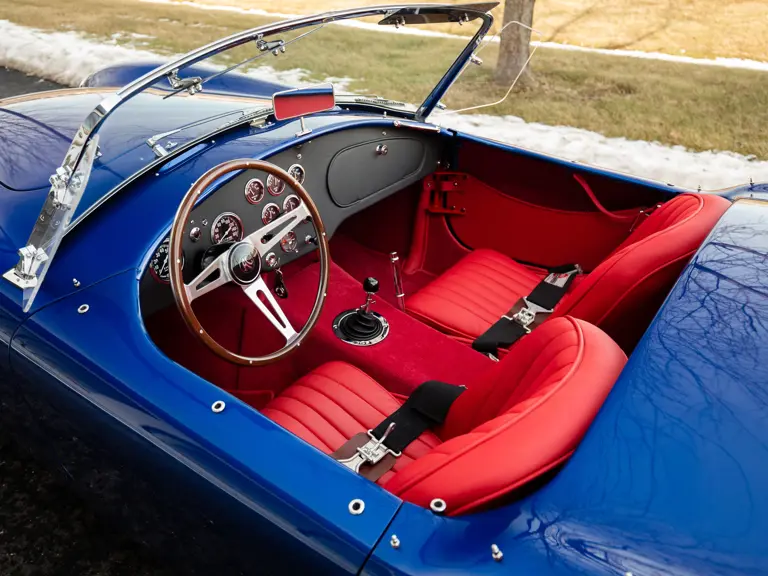
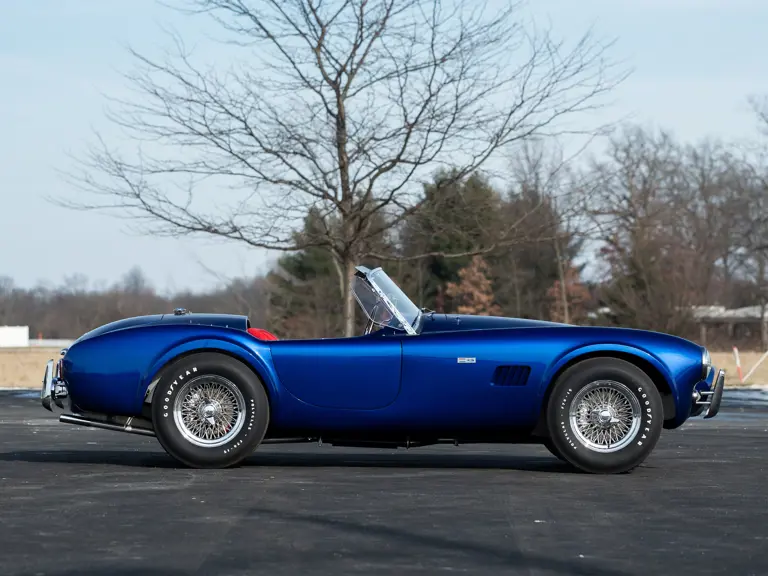
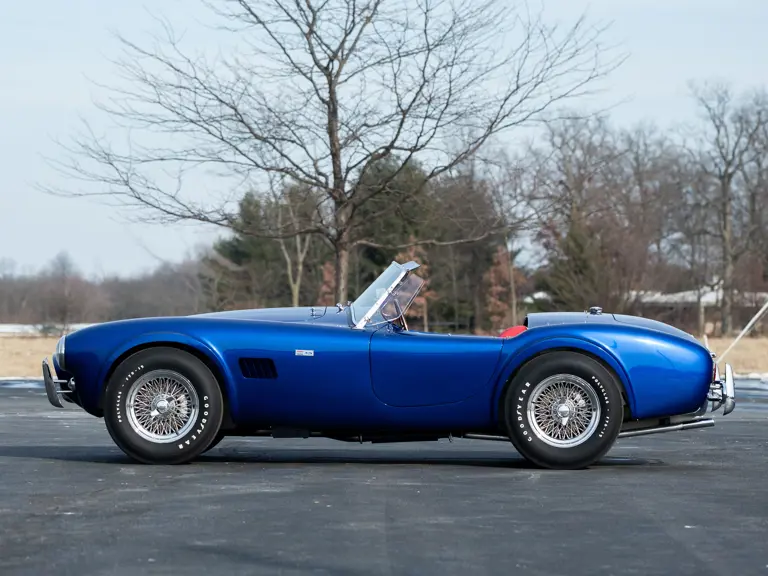
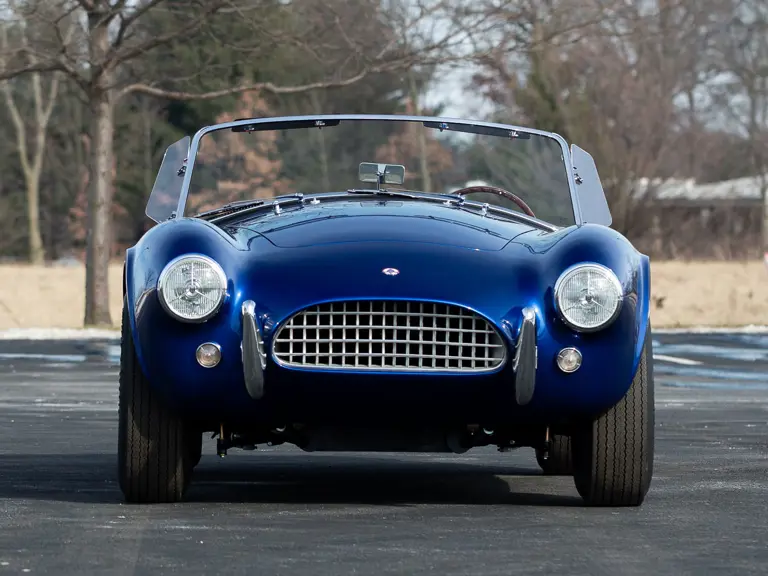
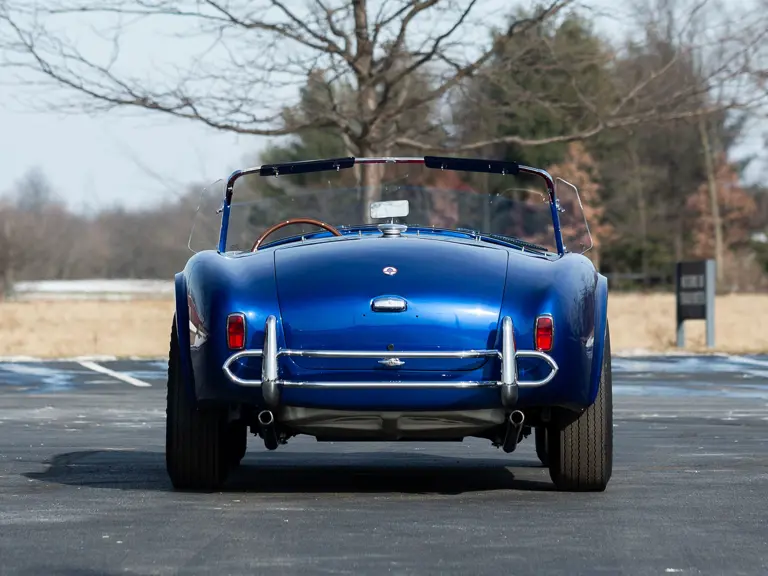
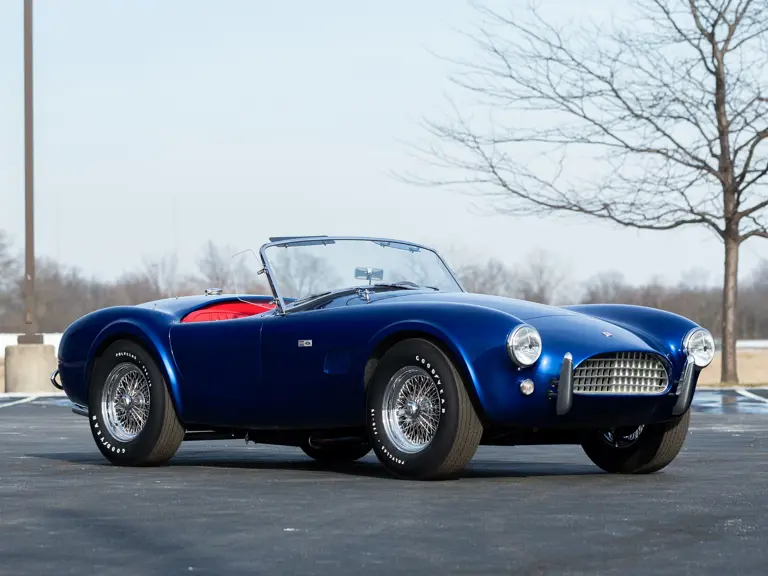
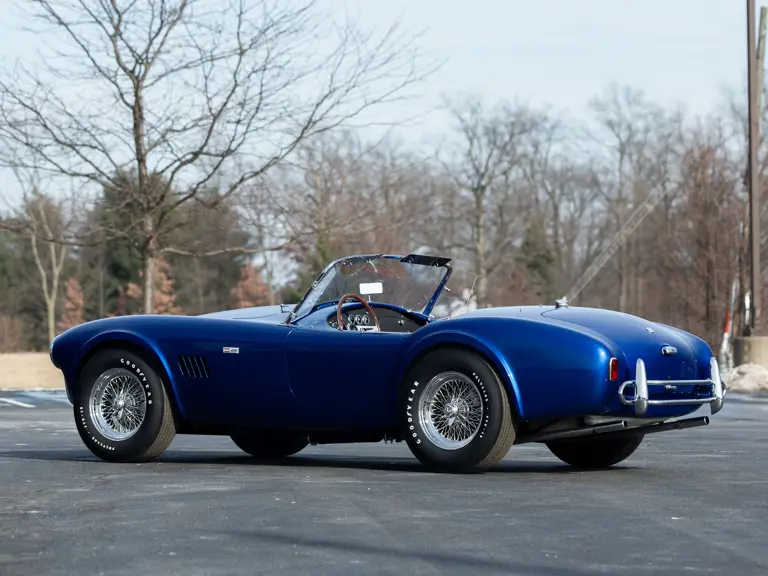
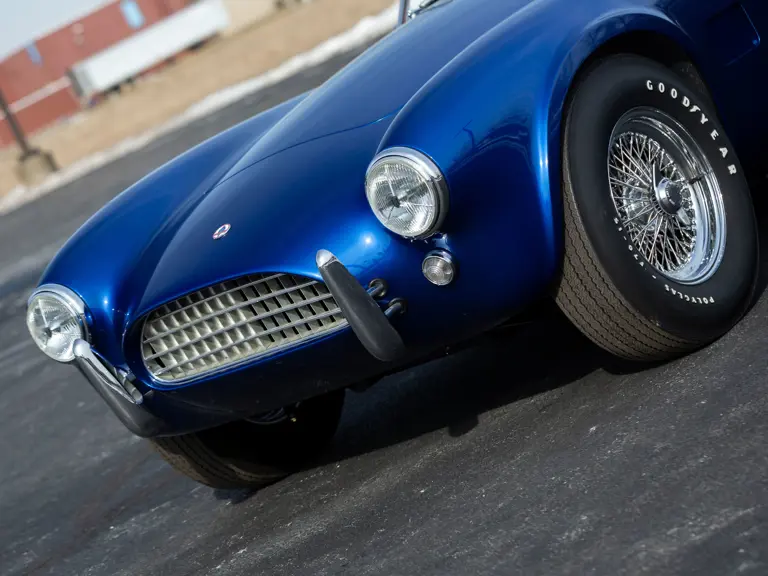
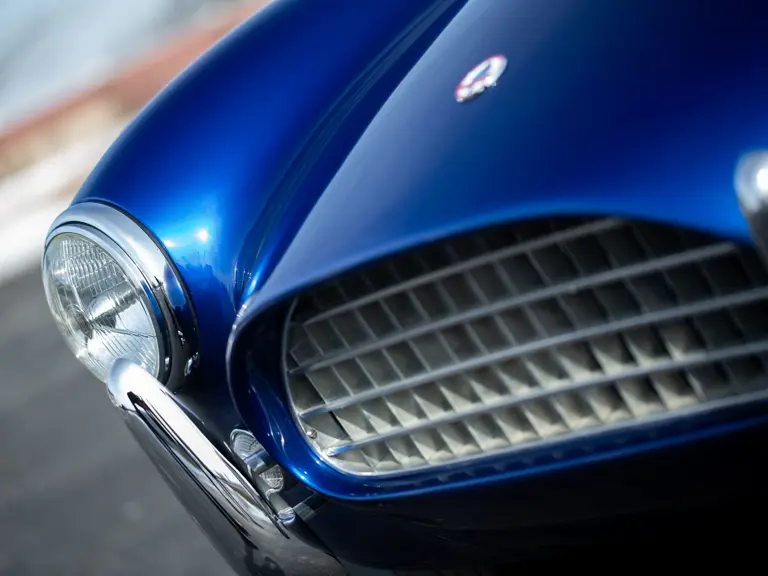
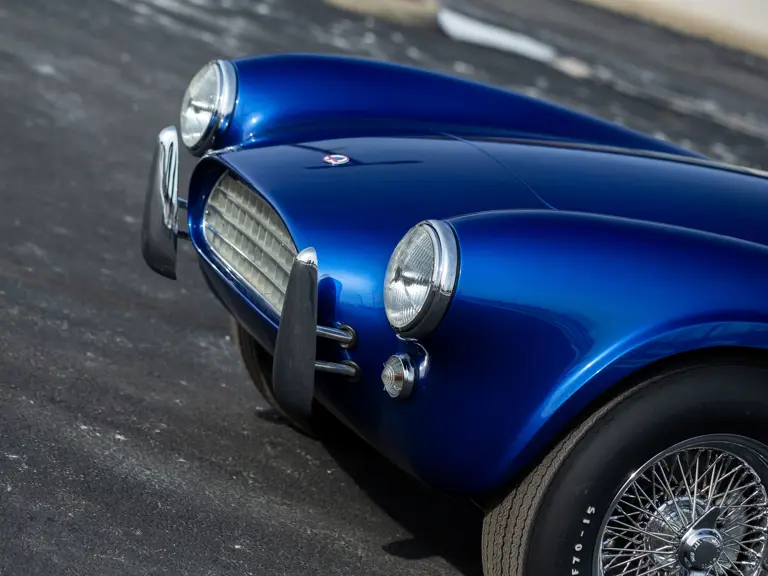
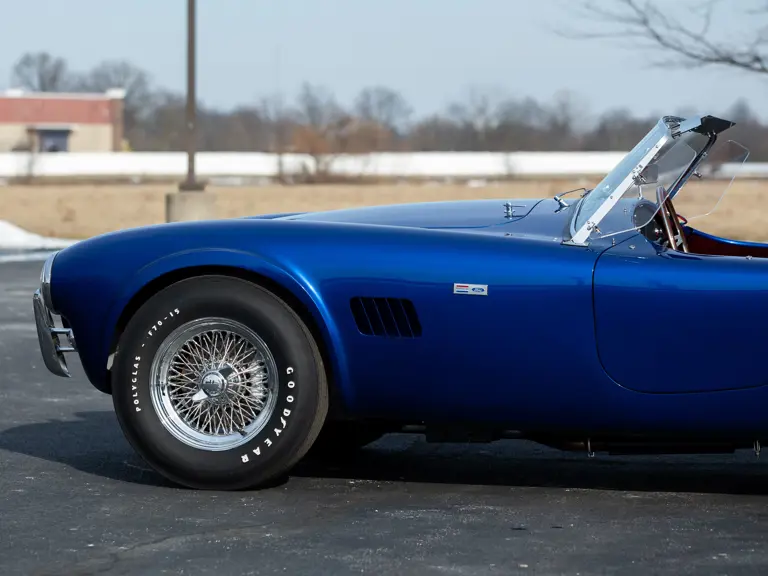
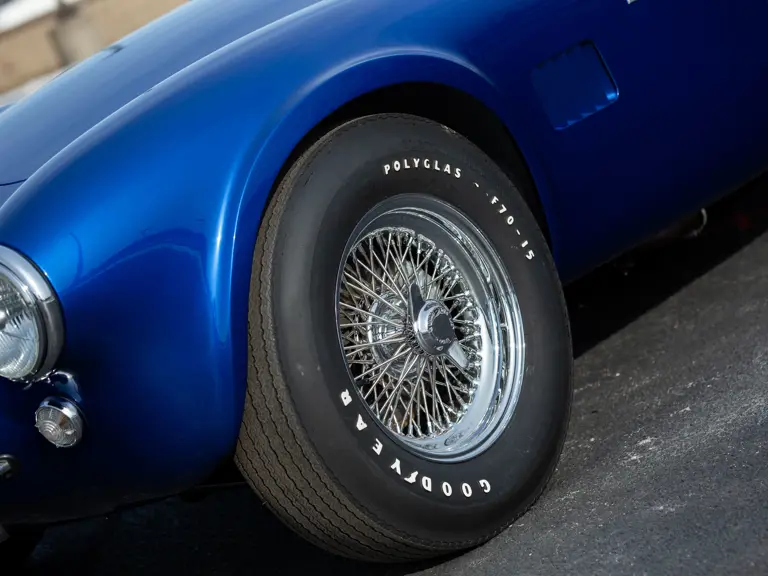
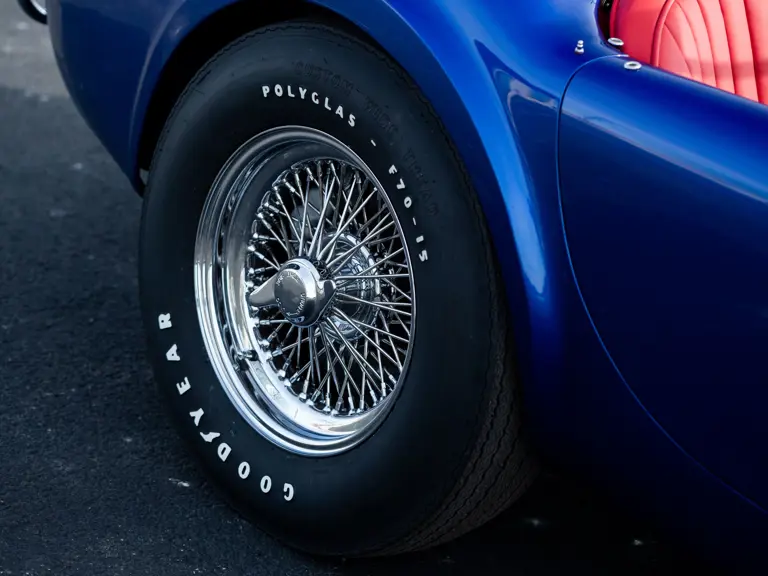
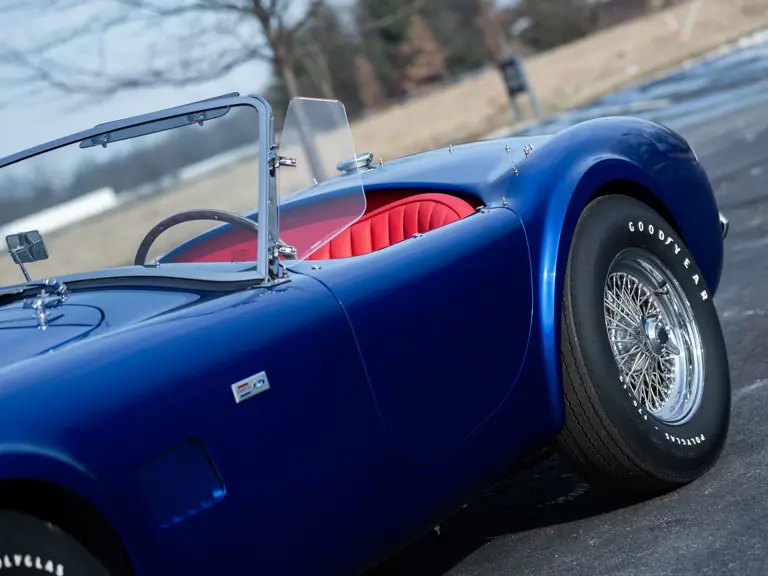

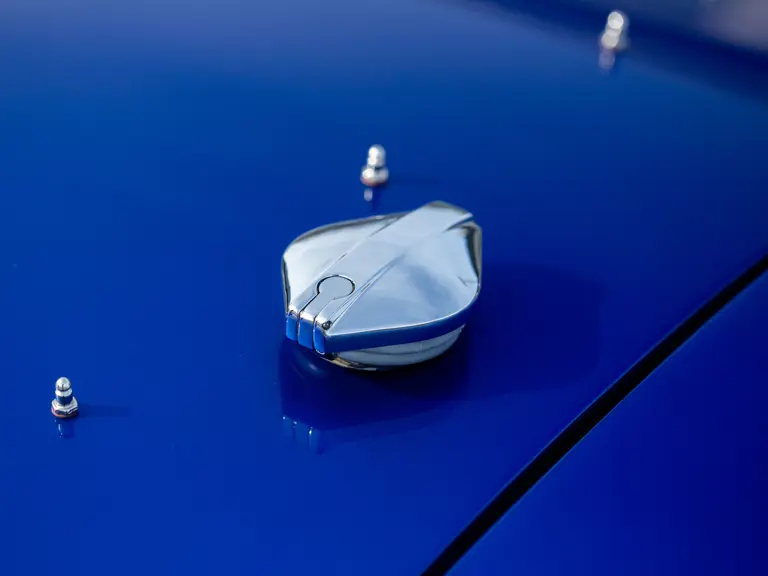
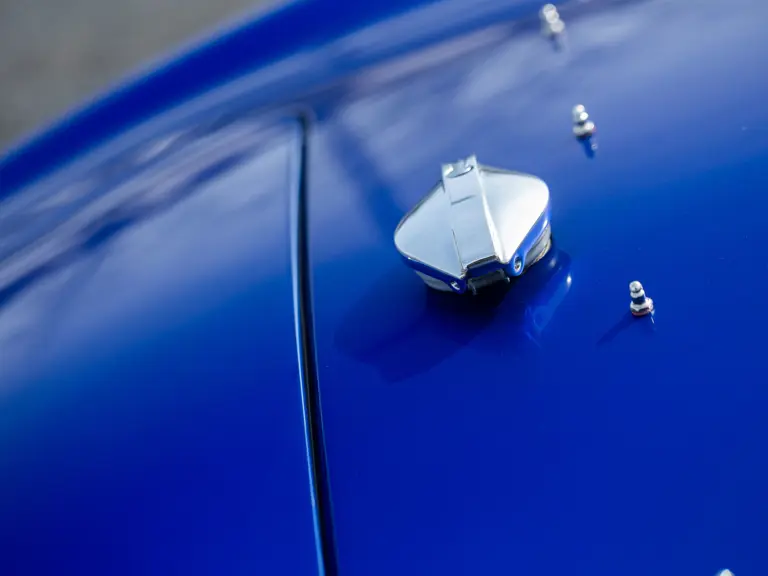
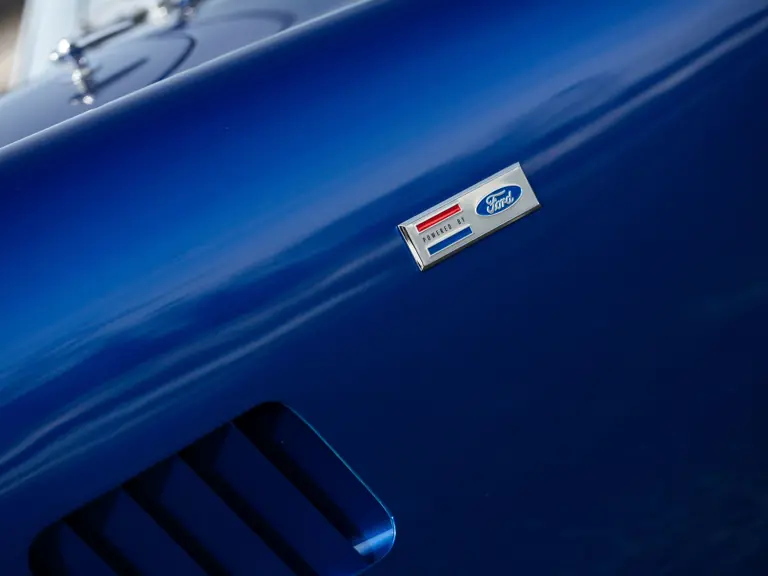
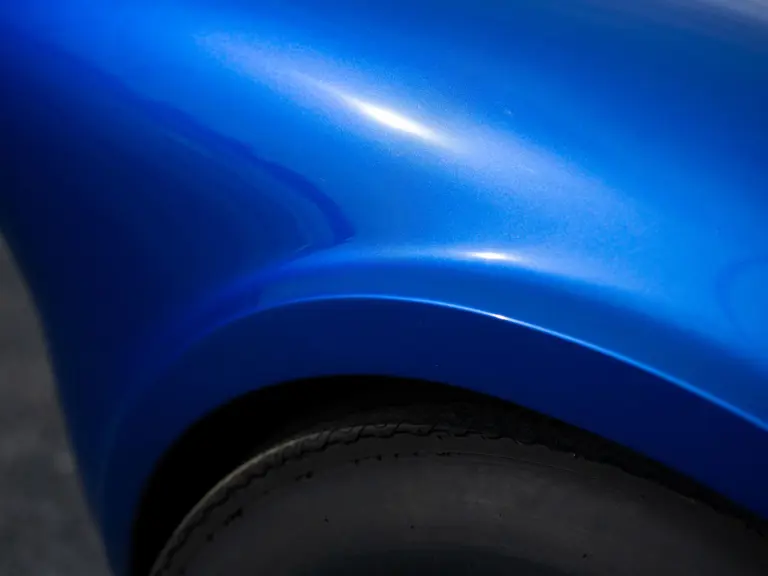
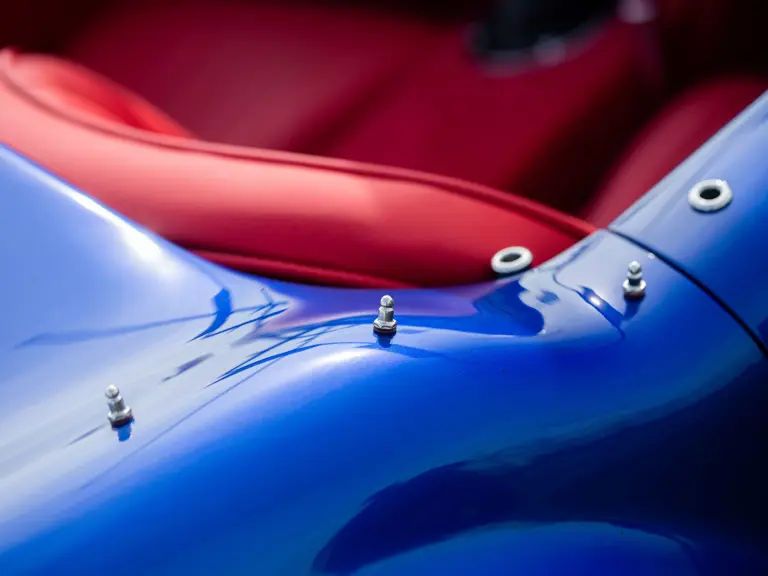

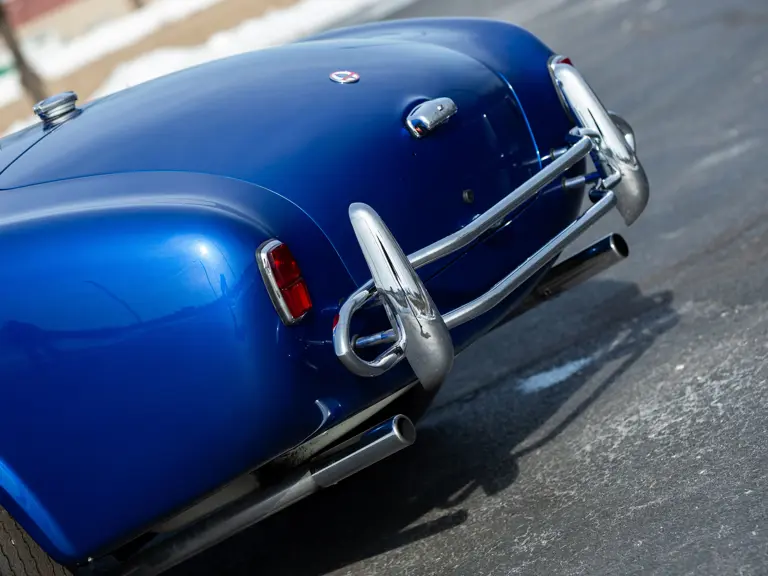
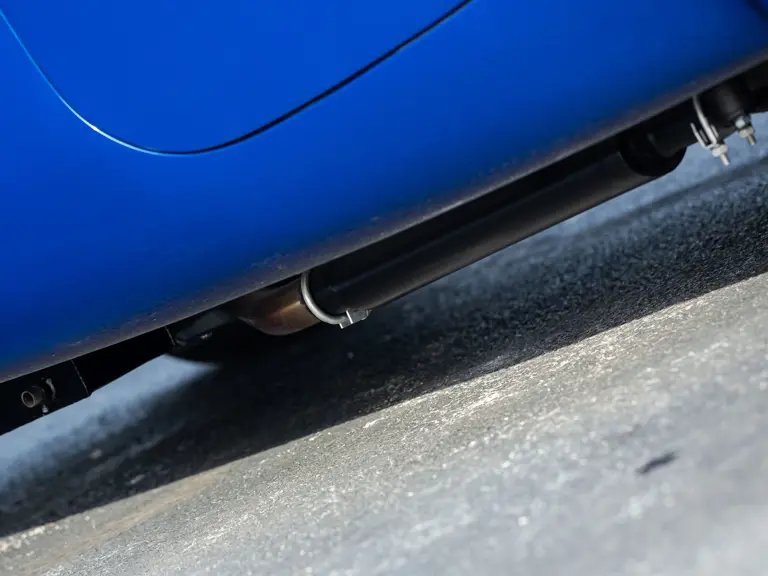
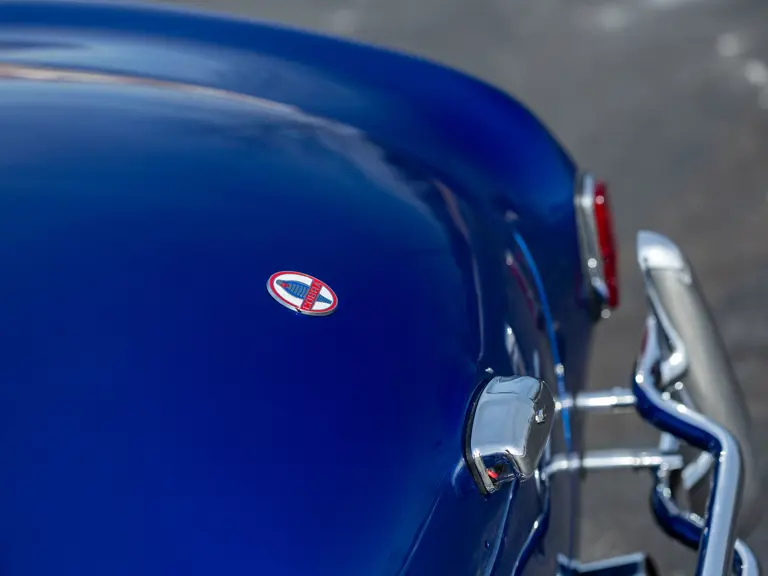
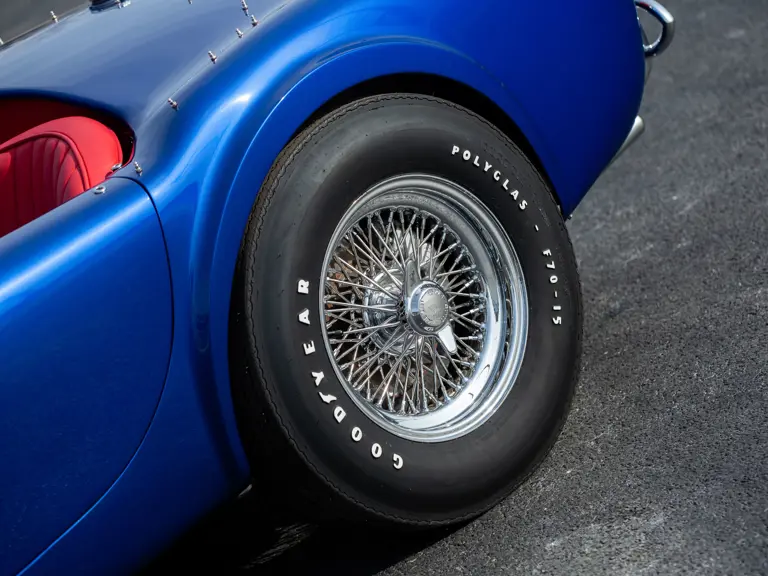
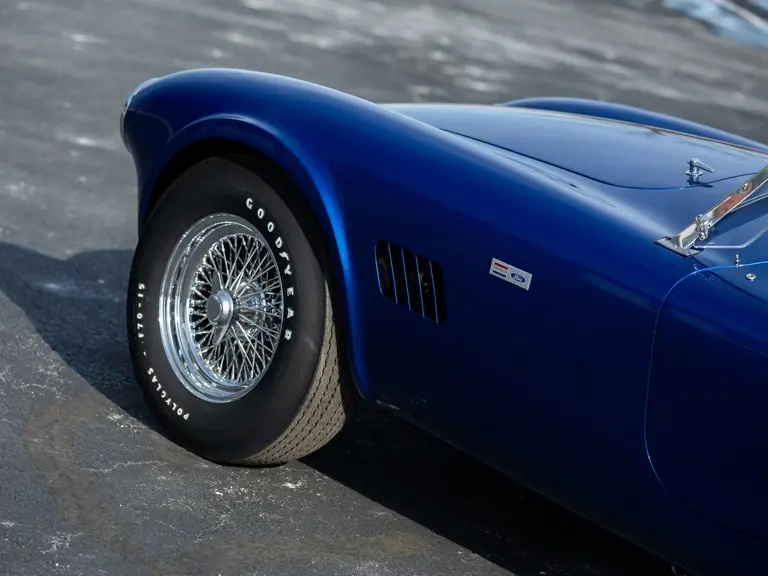
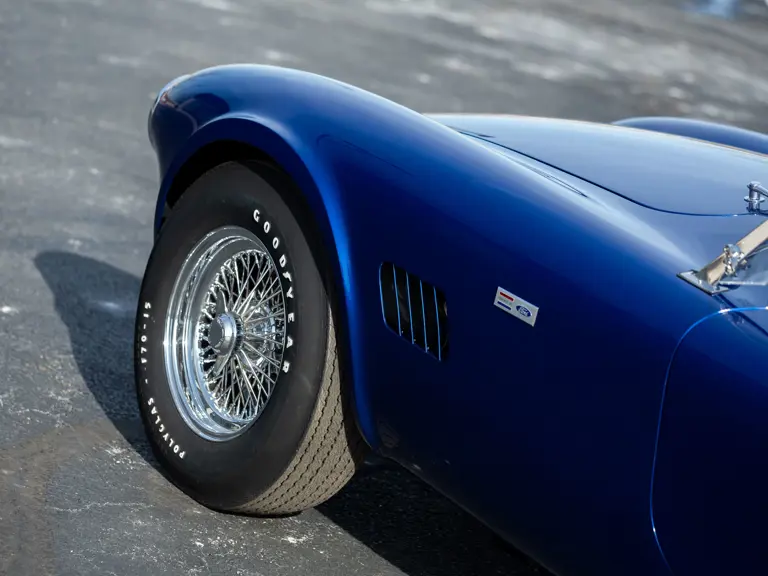

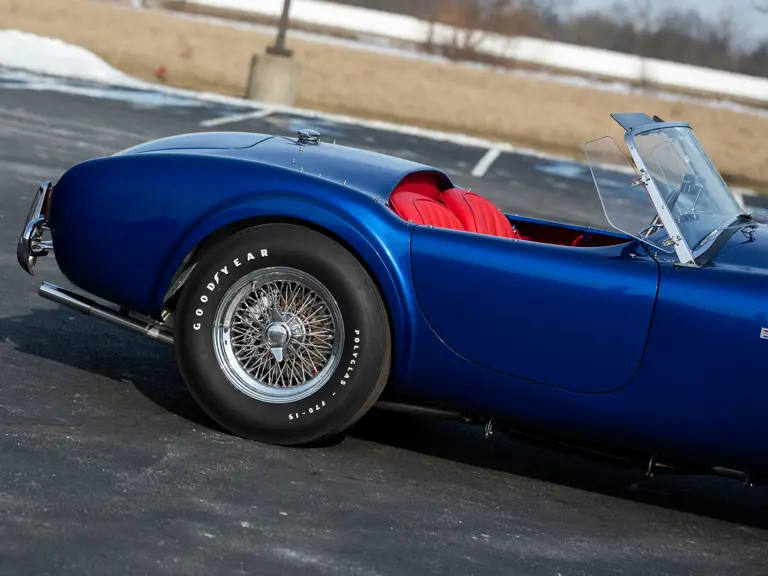
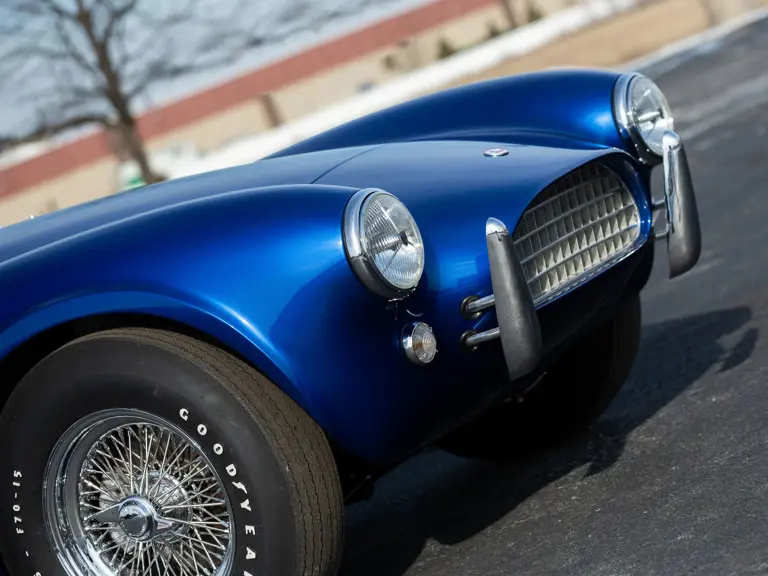

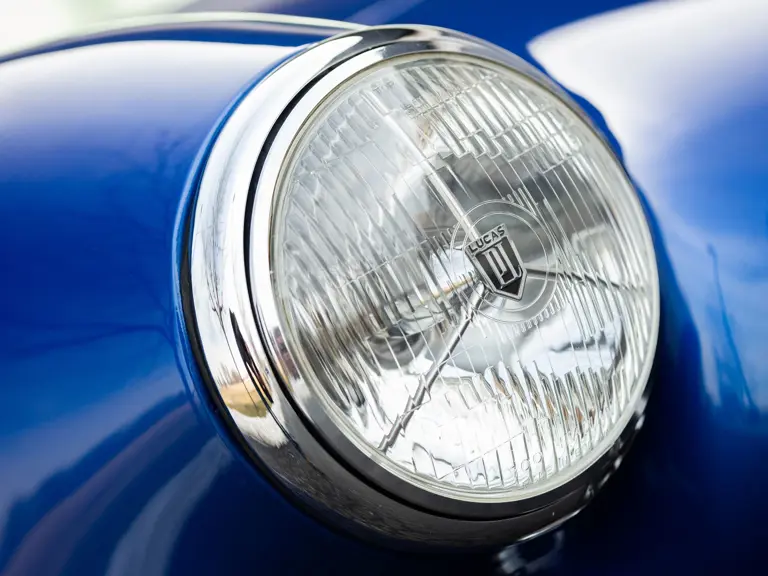
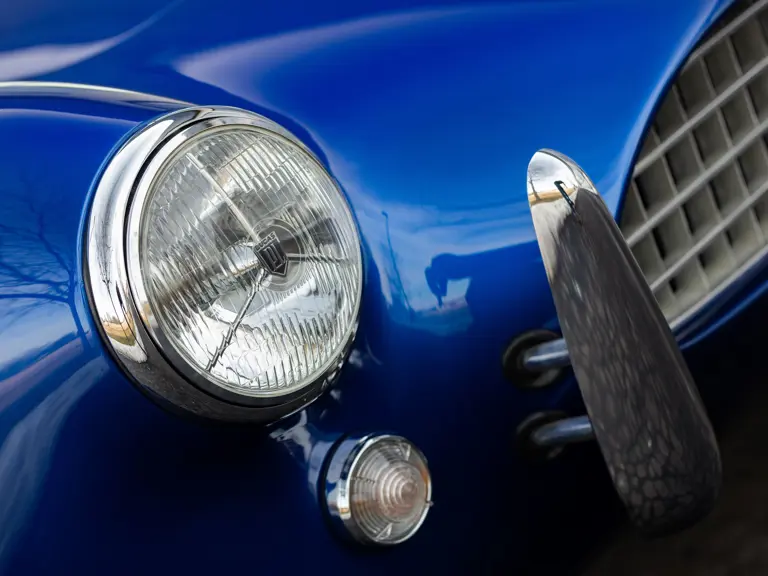

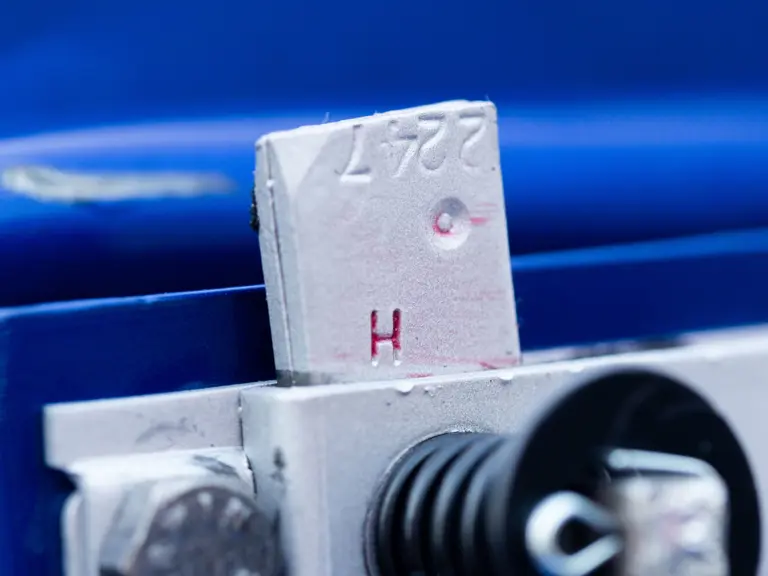
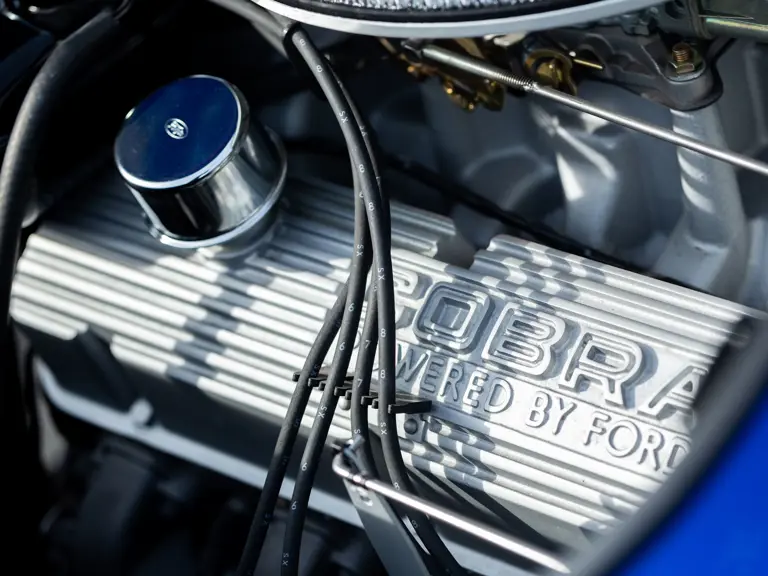
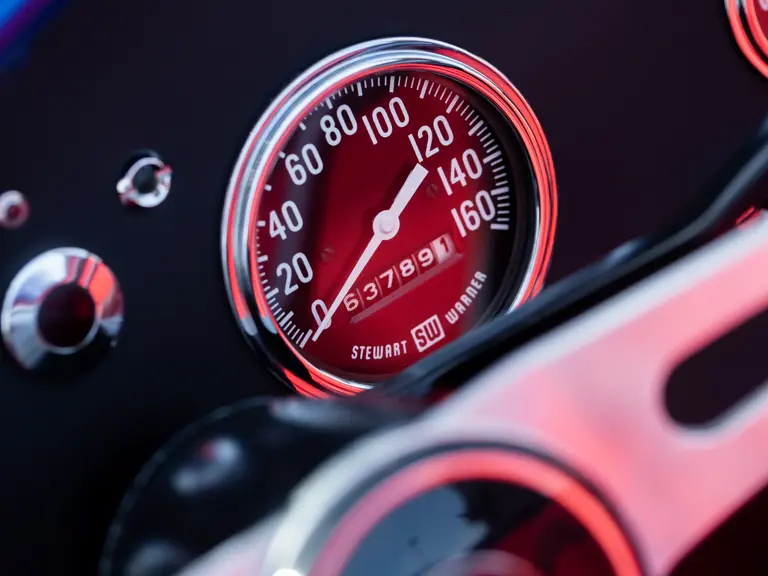
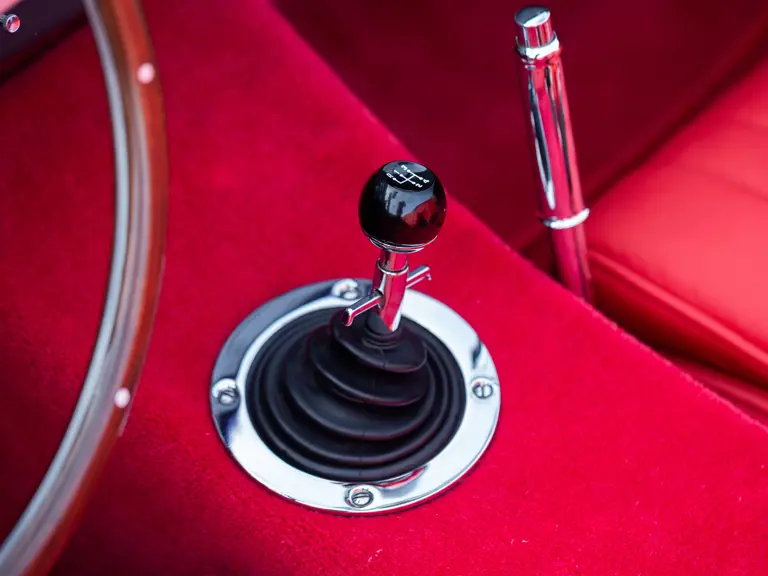
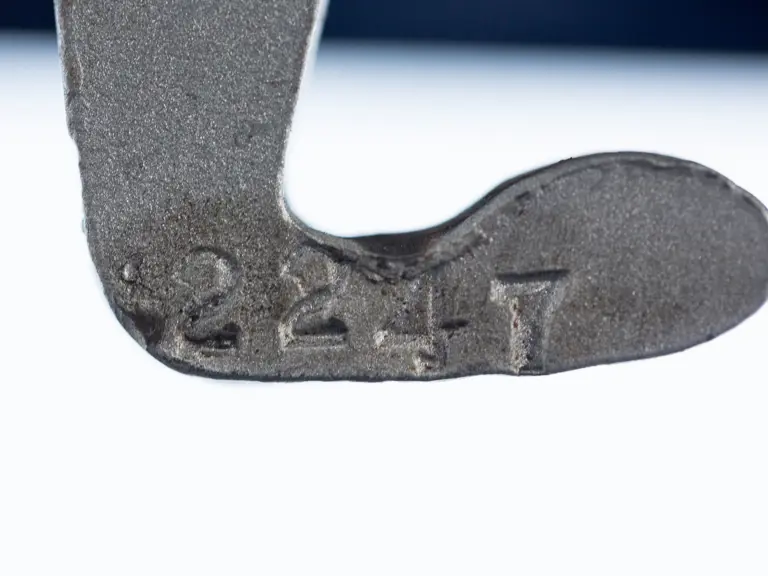

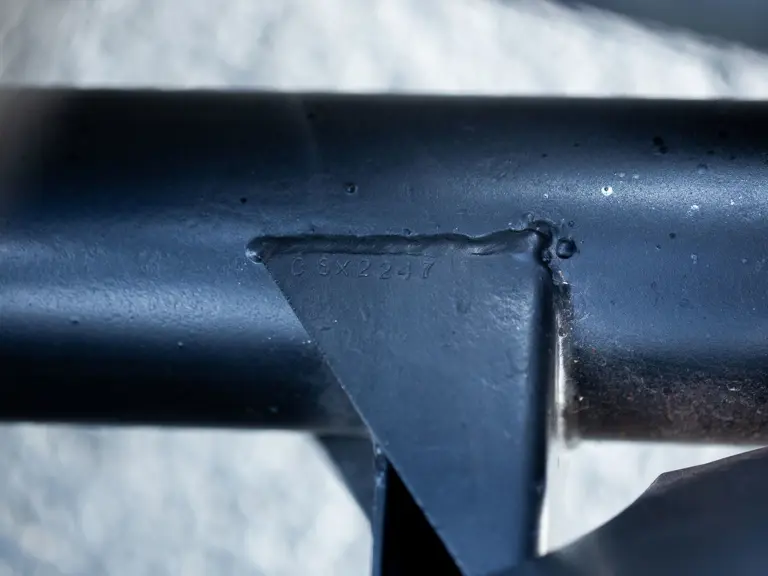
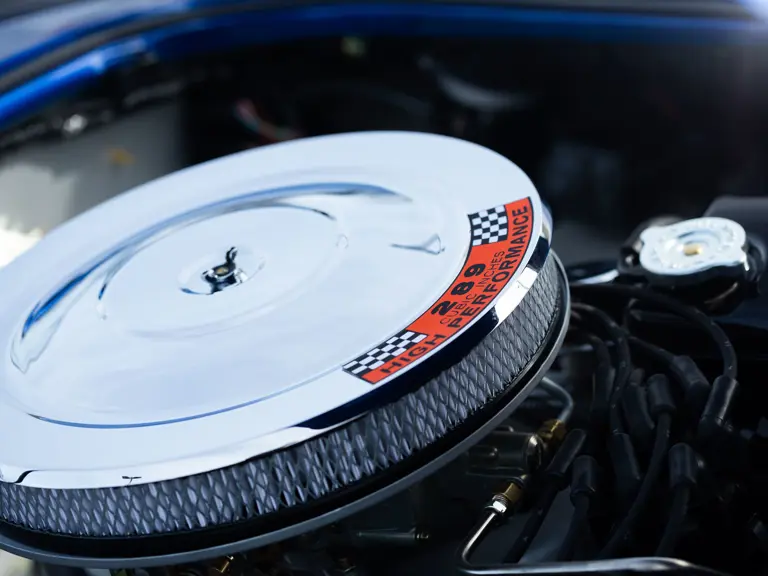


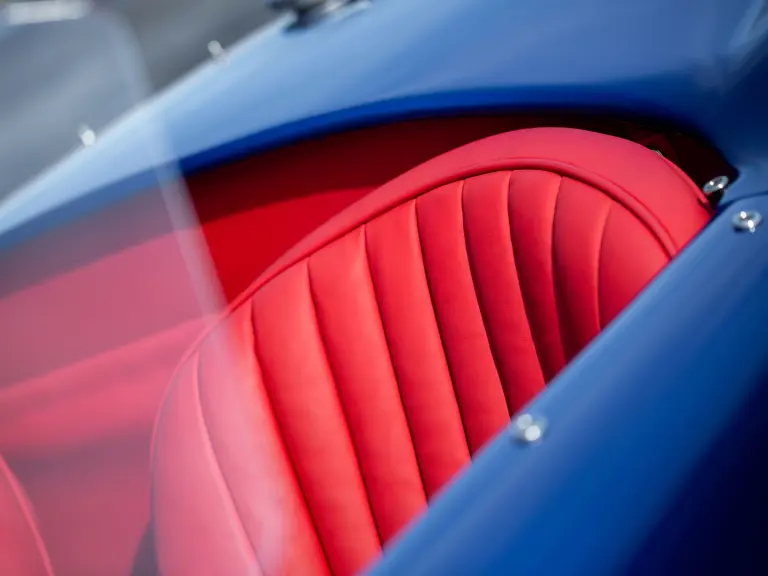
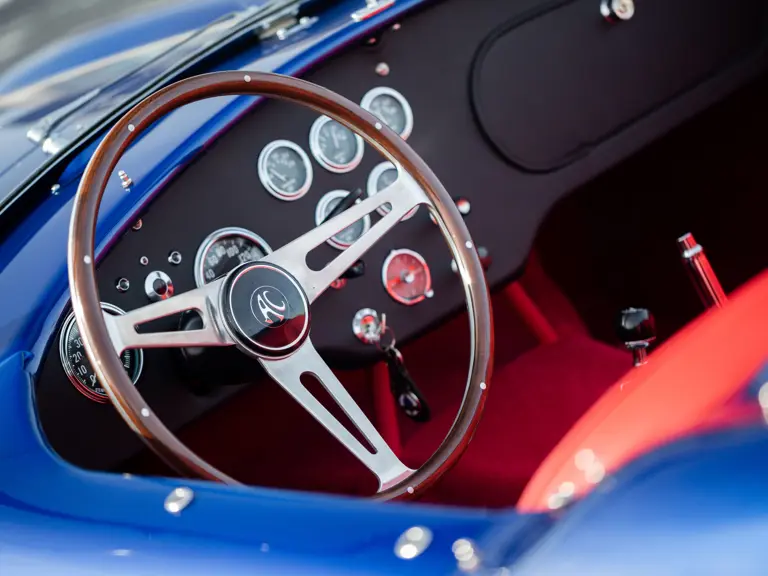
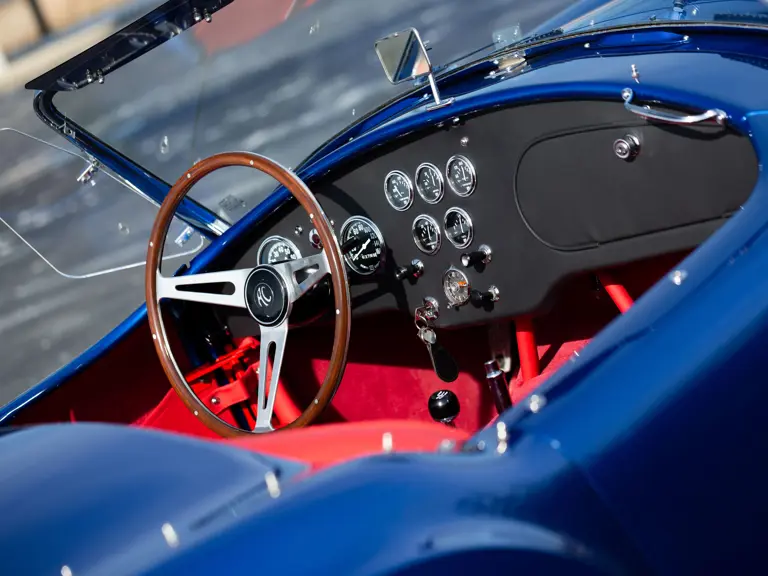

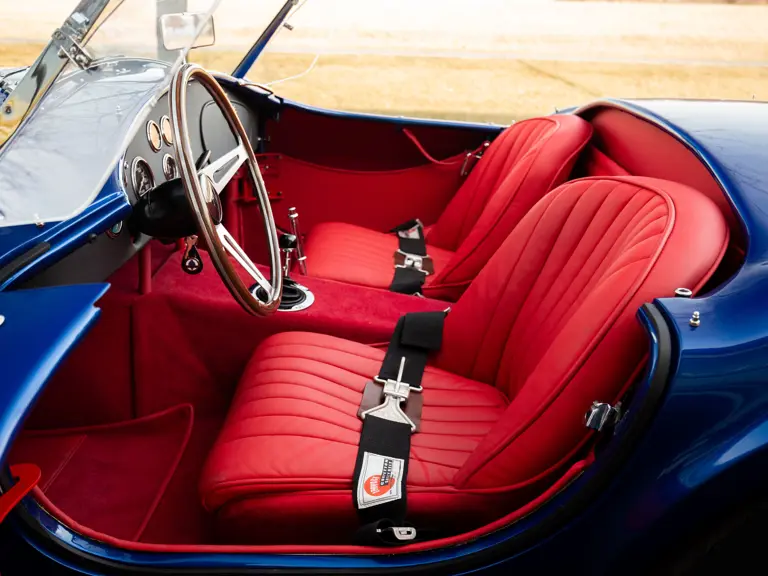
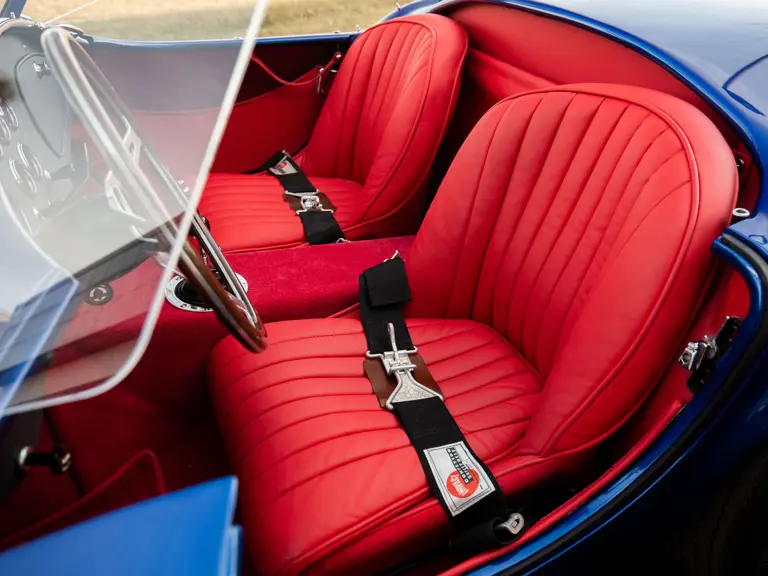


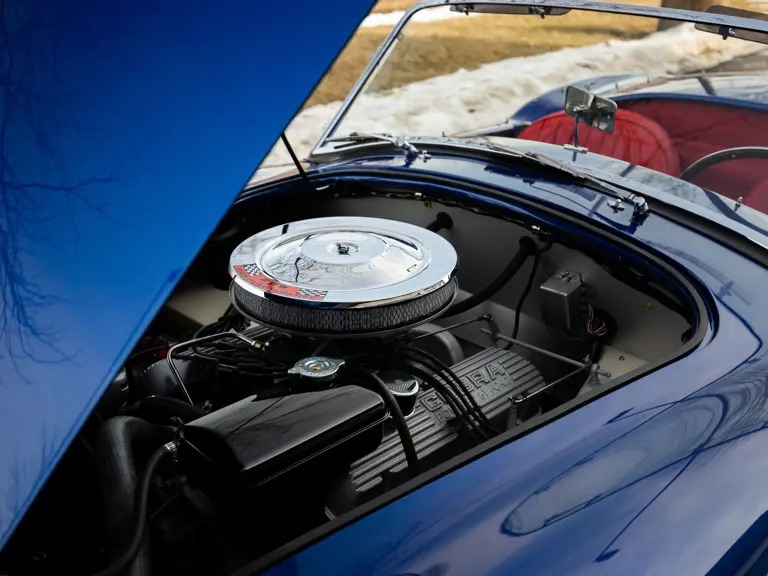
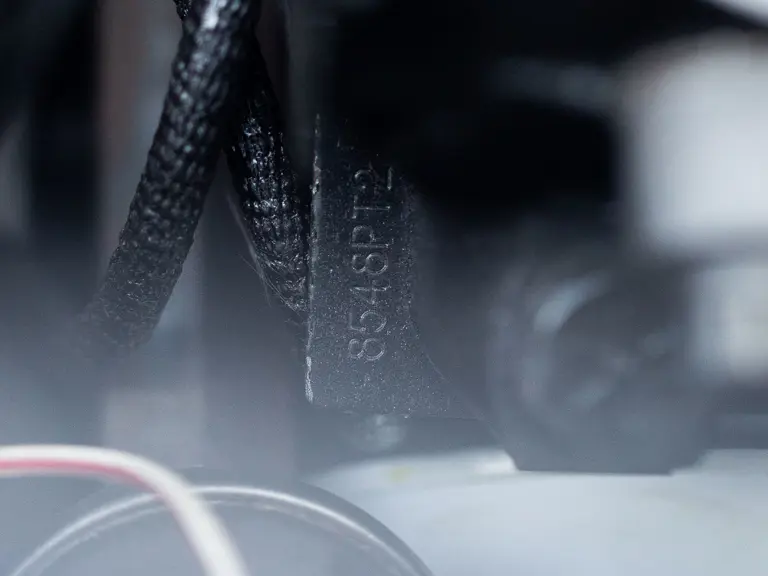
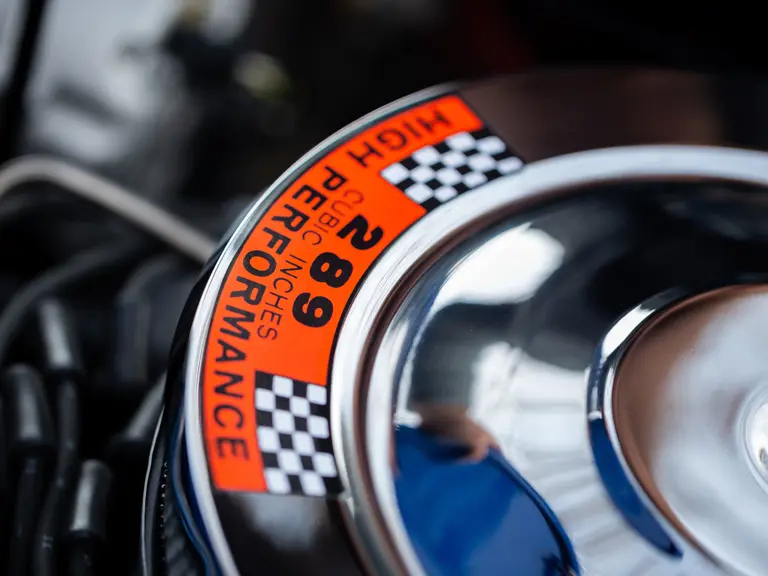
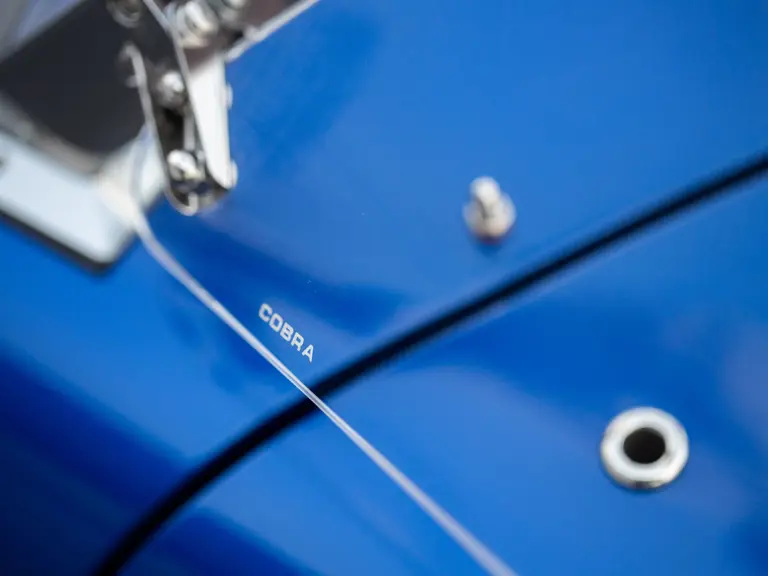


 | Amelia Island, Florida
| Amelia Island, Florida
